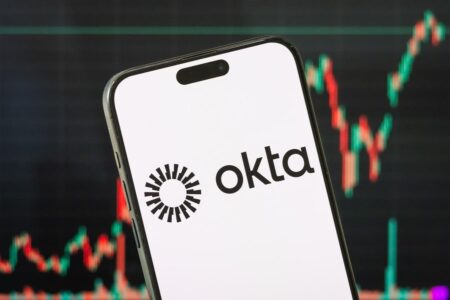Palantir Technologies (NASDAQ:PLTR) shares increased by approximately 7% during Friday’s trading session after The New York Times revealed that the U.S. government is broadening its adoption of Palantir’s main foundry tool throughout federal agencies. The company has witnessed more than $113 million in federal government expenditures since the new Trump administration took office, stemming from both existing contracts and new agreements with the Department of Homeland Security and the Pentagon. Palantir is reportedly also in discussions with the Social Security Administration and the Internal Revenue Service regarding the use of its technology. Additionally, the company secured a $795 million contract from the Department of Defense in late May.
Although the company’s expansion into the public sector is encouraging, we believe that the stock seems appealing yet unstable – rendering it a difficult choice at its current valuation of around $130. We consider the stock to be quite reactive to negative occurrences, given its exceedingly high valuation. Our assessment arrives from contrasting the current valuation of PLTR stock with its operational performance over recent years, along with its current and historical financial metrics. Our evaluation of Palantir Technologies using key indicators of Growth, Profitability, Financial Stability, and Downturn Resilience indicates that the company possesses a very strong operating performance and financial status, as elaborated below. That being said, if you’re looking for potential gains with lower volatility than individual stocks, the Trefis High Quality portfolio serves as an alternative, having outperformed the S&P 500 and generated returns surpassing 91% since its inception.
How Does Palantir Technologies’ Valuation Look vs. The S&P 500?
Based on what you pay for each dollar of sales or profit, PLTR stock appears quite pricey when compared to the overall market.
• Palantir Technologies has a price-to-sales (P/S) ratio of 91.1 compared to a figure of 3.0 for the S&P 500
• Additionally, the firm’s price-to-free cash flow (P/FCF) ratio is 212.7 in contrast to 20.5 for the S&P 500
• Furthermore, it has a price-to-earnings (P/E) ratio of 497.4 versus the benchmark’s 26.4
How Have Palantir Technologies’ Revenues Grown Over Recent Years?
Palantir Technologies’ Revenues have increased significantly over recent years.
• Palantir Technologies has experienced its top line expand at an average rate of 23.9% during the last 3 years (compared to a 5.5% increase for the S&P 500)
• Its revenues have risen by 33.5% from $2.2 billion to $2.9 billion in the past 12 months (against a 5.5% increase for the S&P 500)
• Additionally, its quarterly revenues increased by 39.3% to $828 million in the latest quarter from $608 million a year prior (in comparison to a 4.8% improvement for the S&P 500)
How Profitable Is Palantir Technologies?
Palantir Technologies’ profit margins are greater than those of most companies within the Trefis coverage universe.
• Palantir Technologies’ Operating Income over the last four quarters amounted to $406 million, yielding a subpar Operating Margin of 13.0% (versus 13.2% for the S&P 500)
• Palantir Technologies’ Operating Cash Flow (OCF) during this timeframe was $1.3 billion, suggesting a remarkably high OCF Margin of 42.8% (as opposed to 14.9% for the S&P 500)
• For the most recent four-quarter period, Palantir Technologies’ Net Income was $571 million – indicating a high Net Income Margin of 18.3% (compared to 11.6% for the S&P 500)
Does Palantir Technologies Look Financially Stable?
Palantir Technologies’ balance sheet appears very robust.
• Palantir Technologies’ Debt level was $245 million at the end of the most recent quarter, while its market capitalization is $310 billion (as of 5/30/2025). This denotes a very strong Debt-to-Equity Ratio of 0.1%(compared to 19.9% for the S&P 500). [Note: A low Debt-to-Equity Ratio is favorable]
• Cash (including cash equivalents) constitutes $5.4 billion of the $6.7 billion in Total Assets for Palantir Technologies. This results in a very strong Cash-to-Assets Ratio of 80.6% (versus 13.8% for the S&P 500)
How Resilient Is PLTR Stock During A Downturn?
PLTR stock has performed significantly worse than the benchmark S&P 500 index during several recent downturns. While investors remain hopeful for a soft landing in the U.S. economy, one might wonder just how severe things could become if another recession were to occur. Our dashboard How Low Can Stocks Go During A Market Crash illustrates how key stocks perform during and after the last six market crashes.
Inflation Shock (2022)
• PLTR stock experienced a decline of 84.6% from a high of $39.00 on January 27, 2021, to $6.00 on December 27, 2022, contrasted with a peak-to-trough decrease of 25.4% for the S&P 500
• The stock fully regained its pre-Crisis peak by October 3, 2024
• Since then, the stock has risen to a peak of $131.78 on June 1, 2025
Covid Pandemic (2020)
• PLTR stock declined by 53.9% from a peak of $39.00 on January 27, 2021, to $17.96 on December 20, 2021, in contrast to a peak-to-trough drop of 33.9% for the S&P 500
• The stock fully regained its pre-Crisis peak by October 3, 2024
Putting All The Pieces Together: What It Means For PLTR Stock
In conclusion, Palantir Technologies’ performance across the specified parameters is as follows:
• Growth: Extremely Strong
• Profitability: Strong
• Financial Stability: Extremely Strong
• Downturn Resilience: Extremely Weak
• Overall: Strong
All in all, Palantir’s robust recent growth and solid cash flow are commendable, but its exceedingly high valuation and susceptibility to downturns should cause investors to reflect before investing in the stock.
Not too pleased with the erratic nature of PLTR stock? The Trefis High Quality (HQ) Portfolio, consisting of 30 stocks, has consistently outperformed the S&P 500 over the previous 4-year period. What’s the reason? Collectively, HQ Portfolio stocks delivered superior returns with less risk compared to the benchmark index; a smoother ride is evident in HQ Portfolio performance metrics.
Read the full article here
















